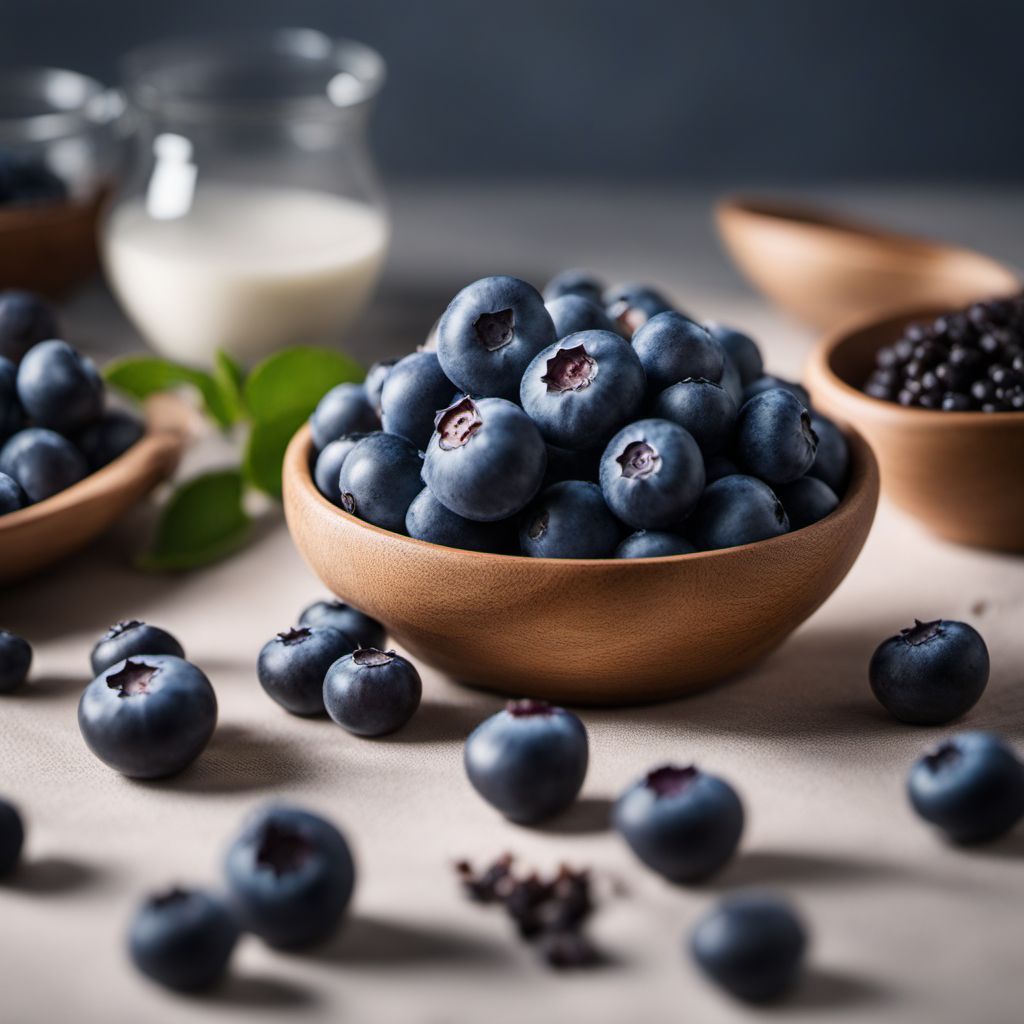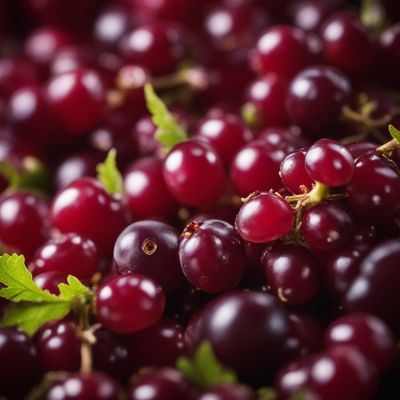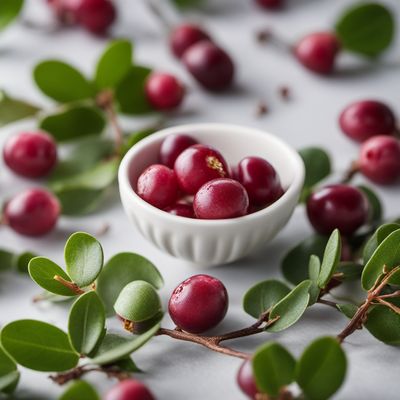
Ingredient
Blueberries and similar-
The Berry Bliss
Blueberries and similar berries are small, round fruits that come in various shades of blue, purple, or red. They have a sweet and slightly tart taste, with a juicy and plump texture. These berries are commonly used in both sweet and savory recipes, adding a refreshing element to salads, desserts, and beverages.
Origins and history
Blueberries and similar berries are native to North America and have been enjoyed by Indigenous peoples for centuries. They were later introduced to Europe, where they became popular in culinary traditions. Today, they are widely cultivated in many regions around the world.
Nutritional information
Blueberries and similar berries are low in calories and packed with essential nutrients, including vitamin C, vitamin K, and dietary fiber. They are also rich in antioxidants, which help protect the body against oxidative stress and inflammation.
How to select
When selecting blueberries and similar berries, look for fruits that are plump, firm, and deeply colored. Avoid berries that are soft, mushy, or have signs of mold. If purchasing frozen berries, ensure they are free from ice crystals and clumps.
Storage recommendations
To keep blueberries and similar berries fresh, store them in the refrigerator in a breathable container or perforated plastic bag. Avoid washing them until ready to use to prevent premature spoilage. For longer-term storage, you can freeze the berries by spreading them in a single layer on a baking sheet and then transferring them to a freezer-safe bag or container.
Preparation tips
Blueberries and similar berries can be enjoyed fresh as a snack, added to smoothies, used in baked goods like muffins and pies, or incorporated into savory dishes such as salads or sauces. They can also be preserved through canning or making jams and jellies.
Substitutions
Blackberries, raspberries, and strawberries can be used as substitutes for blueberries in most recipes, providing a similar burst of fruity flavor. However, keep in mind that each berry has its own unique characteristics that may slightly alter the taste and texture of the final dish.
Culinary uses
Blueberries and similar berries are incredibly versatile and can be used in a wide range of culinary applications. They are commonly found in desserts like blueberry pie, muffins, and pancakes, as well as in savory dishes like salads and sauces.
Availability
Blueberries are commonly available in North America, Europe, and other regions with suitable climates for cultivation. They are also widely imported and can be found in many grocery stores and supermarkets around the world.
More ingredients from this category » Browse all

Blueberries
Bursting with Antioxidant Power: The Vibrant World of Blueberries

Jostaberries
The Tangy Delight: Unveiling the Secrets of Jostaberries

Native currant
The Indigenous Jewel

European barberries
Tangy Gems: Exploring the Delights of European Barberries

Huckleberries
The Wild Delicacy: Unveiling the Enchanting World of Huckleberries

Haskaps
The Marvelous Haskaps

Myrtle berries
The Enchanting Berries of Myrtle

Aronia berries
The Mighty Antioxidant Powerhouse

Juneberries
The Sweet Delight of Juneberries

Bearberries
The Wild Berry Wonder

Lingonberries and similar
The Tart and Tangy Delights: Exploring Lingonberries and Similar Berries

Ugniberries
The Enigmatic Delight: Unveiling the Secrets of Ugniberries